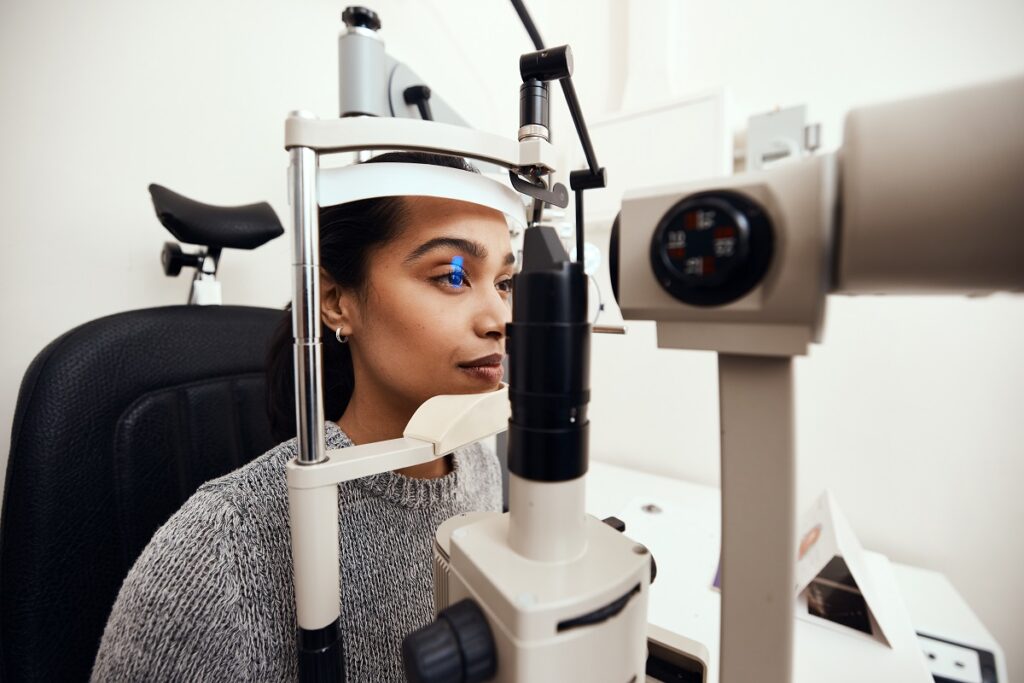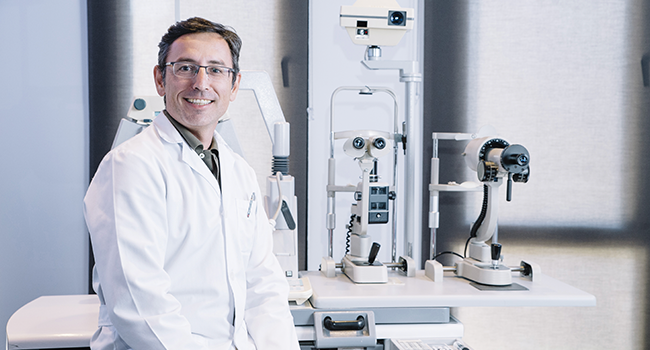Why Picking an Eye Doctor Optometrist is Vital for Your Eyes
Why Picking an Eye Doctor Optometrist is Vital for Your Eyes
Blog Article
Discovering the current Technical Advancements in Optometry and What They Mean for Eye Doctors
In the ever-evolving area of optometry, recent technological innovations are reshaping how experts approach eye care. From the precision of Optical Coherence Tomography to the nuanced understandings offered by AI-driven analysis devices, these technologies are setting brand-new standards in individual assessment and therapy. Teleoptometry is positioned to redefine accessibility, guaranteeing that competence transcends geographical restrictions. As these developments permeate the method, optometrists are encountered with the difficulty of embracing these devices to improve client outcomes. The question continues to be: exactly how will these technical changes redefine the duties and duties within the occupation?
Innovations in Diagnostic Equipment
Advancing the area of optometry, technologies in diagnostic tools have actually changed the means eye care specialists analyze and detect visual problems and eye problems. The past decade has witnessed significant technological developments, allowing even more detailed and accurate assessments.
One more trick advancement is the intro of innovative corneal topography systems, which map the surface curvature of the cornea with precision. These tools are specifically useful for suitable call lenses and detecting corneal conditions. In addition, electronic retinal imaging has transformed typical ophthalmoscopy, providing in-depth, panoramic views of the retina that promote extensive visual exams.
The growth of wavefront aberrometry has also been crucial, making it possible for the analysis of refractive mistakes with unequaled precision (Opticore Optometry). This modern technology assists in personalizing rehabilitative lenses and improving medical end results for refractive surgical procedures. Collectively, these diagnostic improvements encourage optometrists to deliver premium patient treatment, making certain early treatment and tailored treatment strategies, inevitably improving aesthetic wellness outcomes
AI in Person Administration
Structure on the structure of innovative analysis tools, the consolidation of artificial knowledge (AI) in patient monitoring stands for a transformative leap for optometry. AI systems are progressively utilized to enhance efficiency, precision, and customization in person care. By examining vast quantities of information, AI can identify patterns and forecast potential ocular conditions, making it possible for optometrists to tailor interventions much more efficiently. This capacity is essential in taking care of chronic eye diseases such as glaucoma and diabetic person retinopathy, where very early discovery and continuous monitoring are vital.
Additionally, AI-driven platforms help with structured client interactions and administrative procedures. Automated organizing, virtual examinations, and individualized follow-up strategies not only enhance patient contentment however likewise optimize time administration for specialists. These systems can triage patients based on the seriousness of their problems, making sure that those in crucial requirement get prompt attention.
Additionally, AI boosts decision-making by offering eye doctors with evidence-based referrals and treatment pathways. By incorporating data from electronic wellness records, AI devices offer insights that inform scientific decisions, decreasing the danger of mistakes and improving client end results. As AI proceeds to advance, its role in patient management will likely expand, reshaping the landscape of optometric treatment.
Developments in Retinal Imaging
In the world of optometry, retinal imaging has seen exceptional technical advancements that are boosting analysis abilities and patient care. Technologies such as Optical Coherence Tomography (OCT) and fundus digital photography have actually reinvented how eye doctors analyze the retina and picture. OCT, in certain, supplies high-resolution, cross-sectional photos of the retina, allowing for the thorough exam of its layers. This capacity is important for early detection and management of problems like glaucoma, diabetic retinopathy, and age-related macular deterioration.
Boosted imaging techniques like OCT angiography are more refining analysis precision. Eye Doctor. Such improvements assist in the identification of minute retinal modifications that could represent disease progression.
In addition, innovations in artificial intelligence are enhancing retinal imaging by making it possible for computerized evaluation of big datasets. These systems assist optometrists in determining patterns a measure of pathology, thereby enhancing diagnostic accuracy have a peek at this website and efficiency. Jointly, these advancements are transforming retinal imaging right into a foundation of modern-day eye care, enhancing end results and broadening healing possibilities.
Teleoptometry's Expanding Function
Teleoptometry is significantly becoming an essential component of eye care, driven by improvements in digital communication and diagnostic tools. This is specifically beneficial in rural and underserved areas where access to specialized eye treatment is typically limited.
The combination of fabricated intelligence (AI) additional enhances teleoptometry, enabling the evaluation of visual information and helping in the discovery of eye conditions such as glaucoma and diabetic person retinopathy. AI-powered formulas can rapidly analyze complex imaging information, supplying optometrists with valuable insights that bolster medical decision-making.
In addition, teleoptometry sustains connection of treatment through seamless combination with electronic health records (EHRs), enabling optometrists to preserve comprehensive client backgrounds. When consulting with various specialists., this ensures that people obtain regular and customized treatment also.
Despite these advantages, obstacles remain, consisting of making certain data safety and handling client expectations. Nevertheless, teleoptometry represents a considerable stride in the direction of even more available, reliable, and patient-centered eye care. As technology evolves, its role is positioned to expand better.

Future Trends in Eye Treatment
A myriad of cutting-edge fads is readied to reshape the future of eye treatment, driven by technological developments and the progressing demands of people. One significant pattern is the assimilation of expert system (AI) in diagnostics, which promises to boost the precision and effectiveness of eye examinations. AI algorithms can evaluate huge amounts of information from retinal pictures, possibly finding problems like diabetic person retinopathy and glaucoma earlier than typical approaches.
Moreover, tailored medication is getting traction in optometry, with hereditary screening informing personalized treatment strategies. This strategy intends to enhance individual results by customizing interventions to private genetic profiles. Wearable innovation, such as clever contact lenses, is get redirected here likewise on the horizon, providing real-time surveillance of intraocular pressure or glucose levels, hence supplying continuous insights right into systemic and eye wellness.
The fostering of increased reality (AR) and online reality (VIRTUAL REALITY) in training and individual education and learning is another arising trend. These technologies provide immersive experiences that can boost understanding and skills both for clients and eye doctors. As these patterns progress, optometrists should stay abreast of technological improvements to give cutting-edge care, making sure better client outcomes and satisfaction in the dynamic landscape of eye treatment.
Verdict

Jointly, these analysis developments encourage optometrists to provide superior individual treatment, making certain early treatment and customized therapy strategies, eventually enhancing visual health results.

As these innovations proceed to develop, eye doctors need to adapt and integrate them into practice, eventually enhancing workflow efficiency and boosting the requirement of eye treatment provided to patients.
Report this page